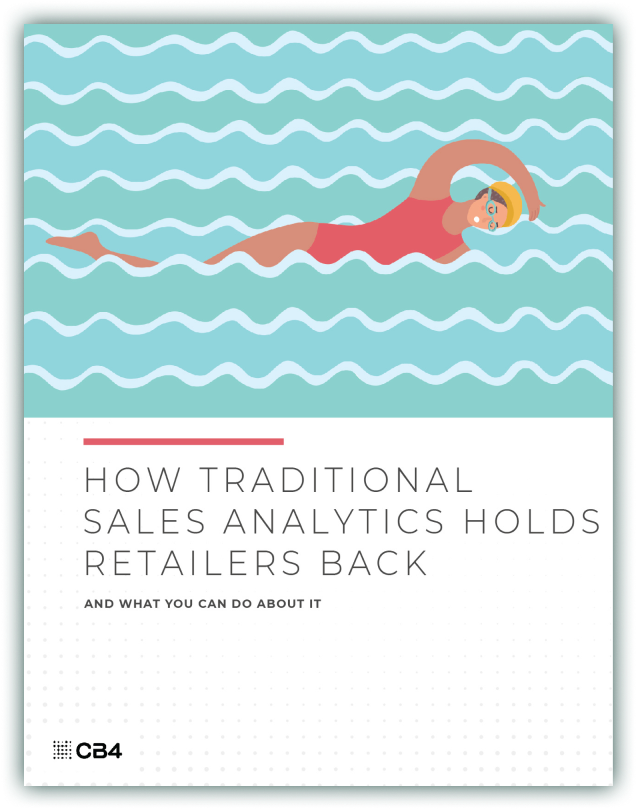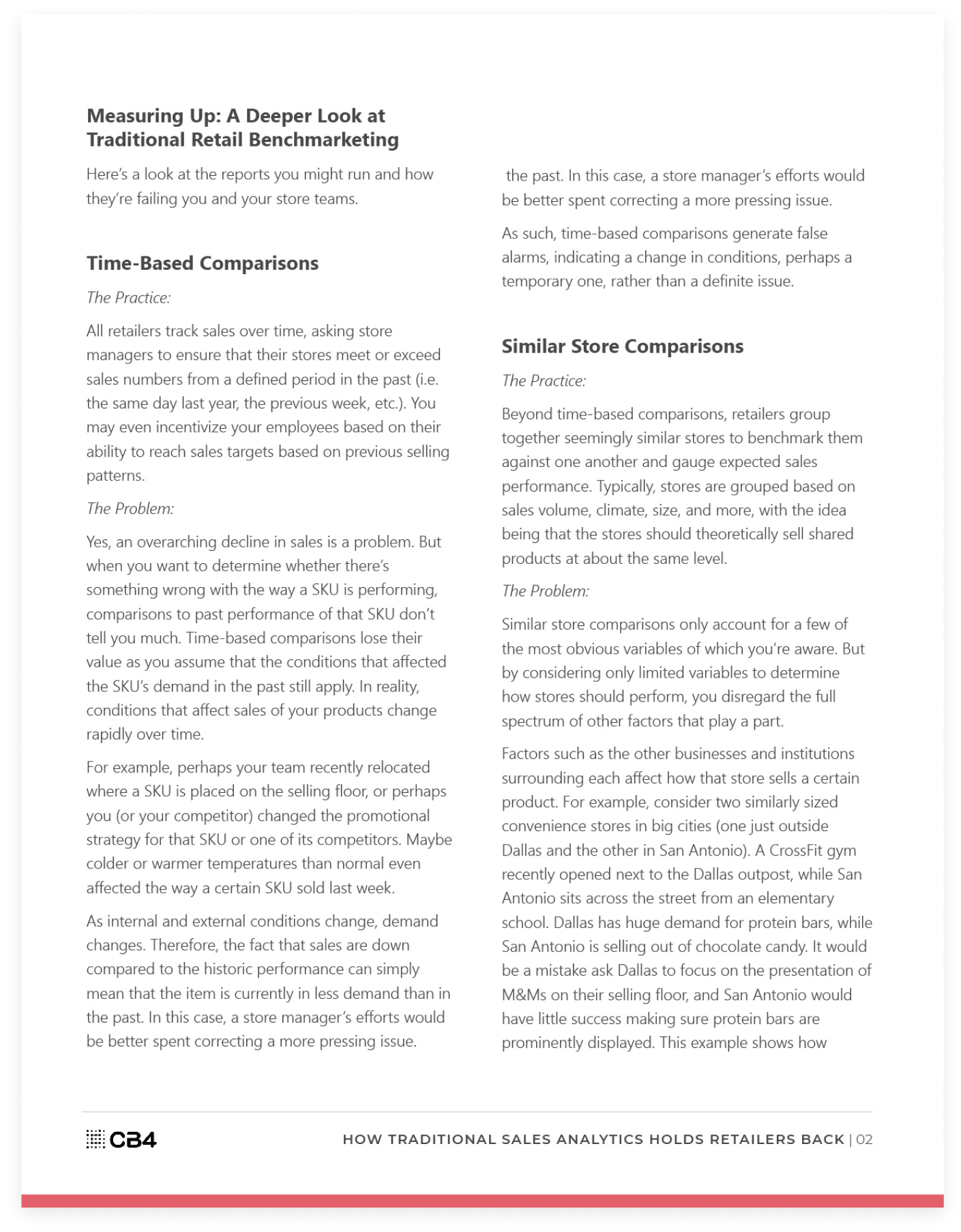
How Traditional Sales Analytics Holds Retailers Back
What’s inside
Until now, you had to rely on traditional sales analysis to identify underperforming SKUs at each location in your retail chain. To analyze sales, your IT teams input relevant sales data into spreadsheets, crunching the numbers to drive sales. Probably, you’ve used a combination of these methods to find store-level sales anomalies:
• Time-Based Comparisons
• Similar Store Comparisons
• Best Sellers List
You send these reports down the chain, either to category or district managers, store or department managers, sales or stock associates. Even if you use BI tools, you find that your hit rate is incredibly low, and it’s nearly impossible to tie these initiates back to revenue gain.
In this article, we’ll examine why.



